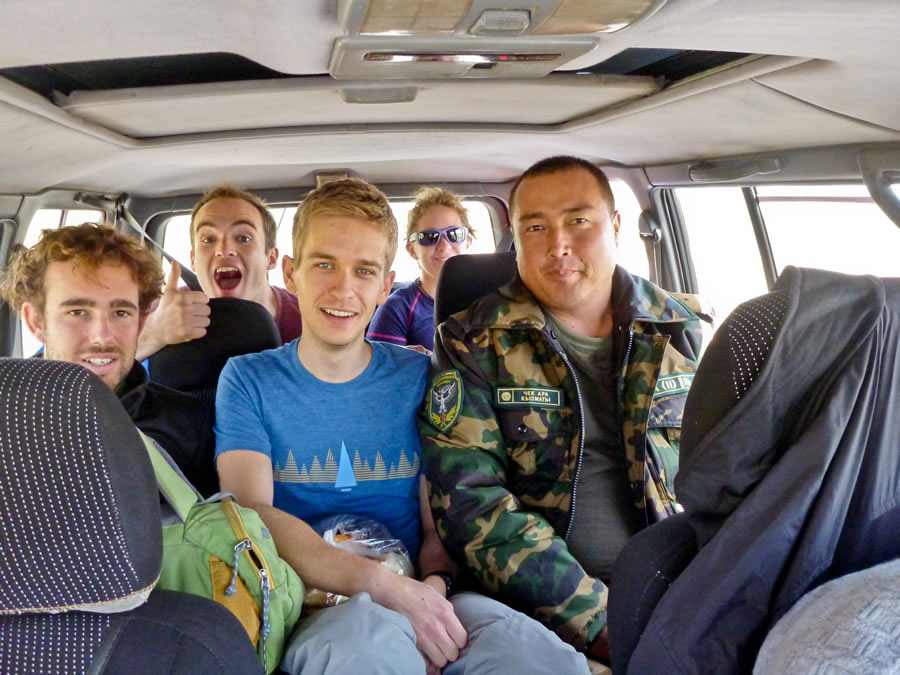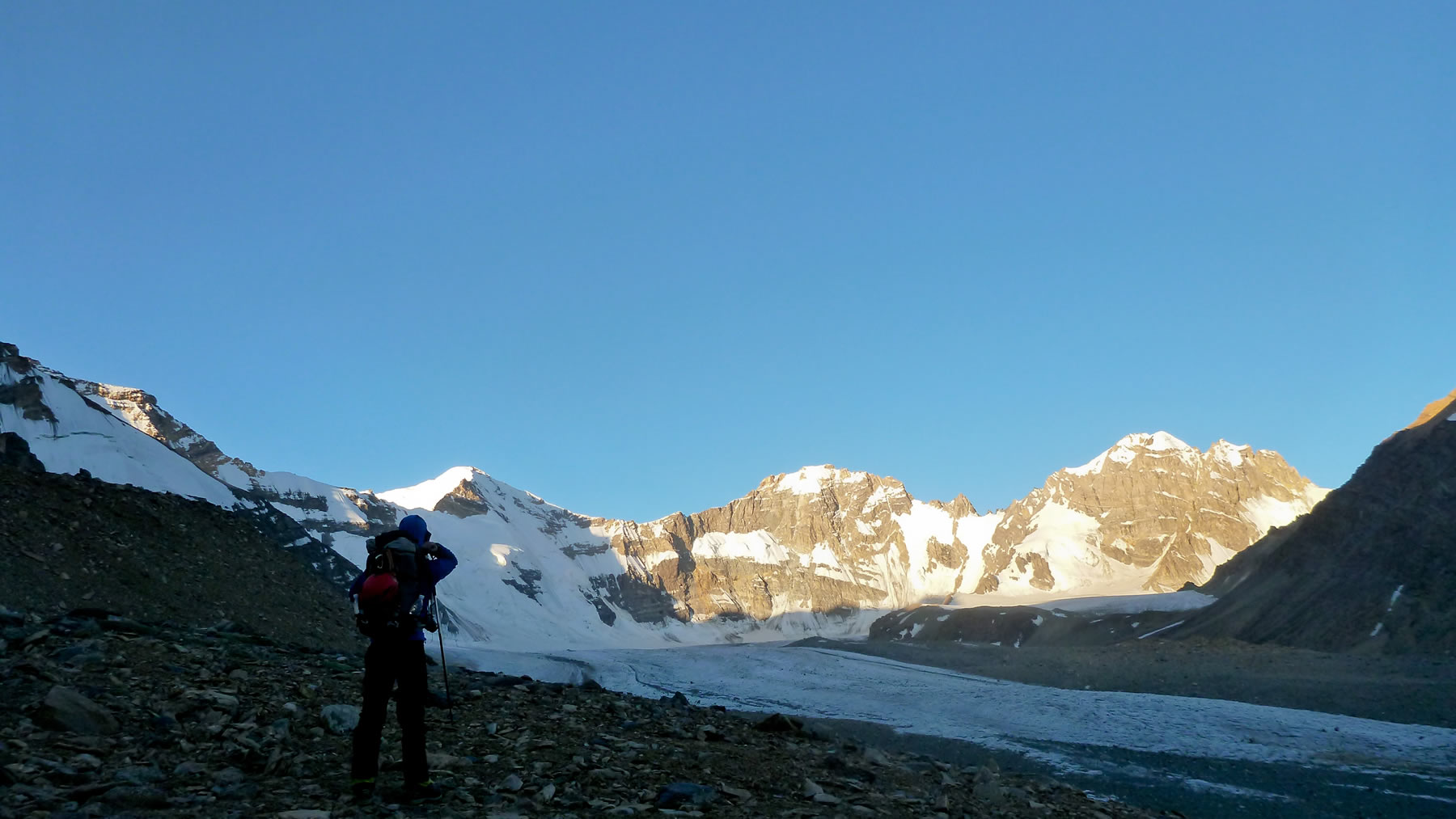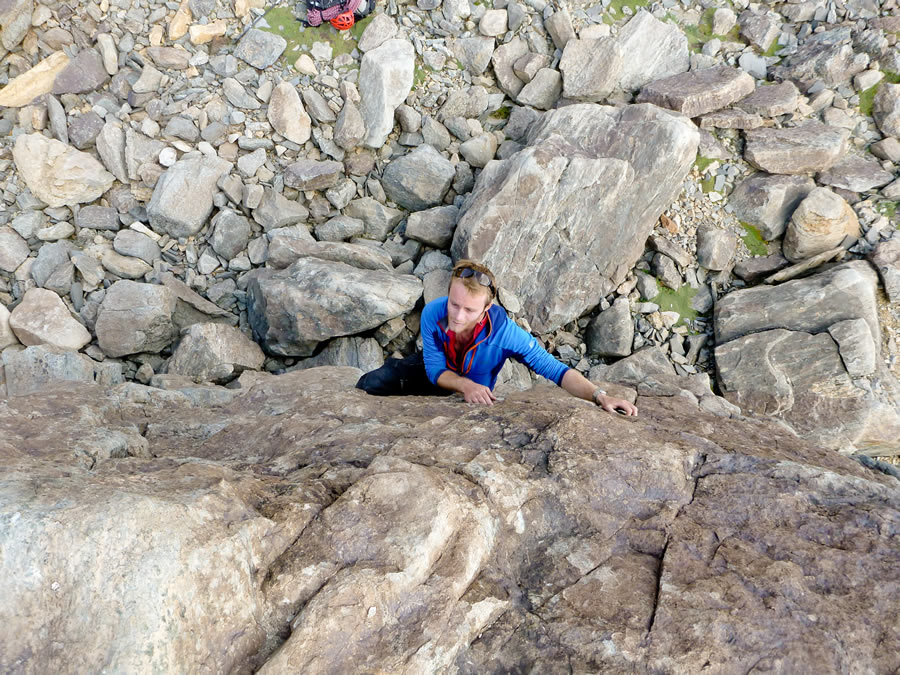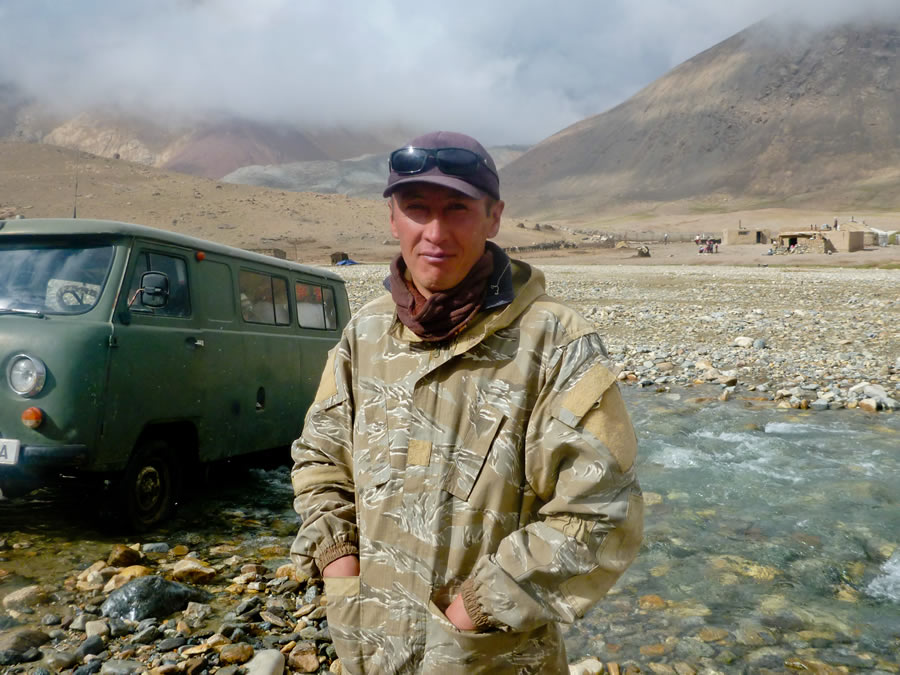Trying to climb in Tajikistan
Muzkol Range, Tajikistan, 2015
At 5200m, in the middle of Tajikistan, I was panting hard. James strolled nonchalantly beside me. He was feeling the benefit of six weeks trekking in India whilst I had been sat at my office desk in Warwick a mere four days earlier.
Over the past few years I have perfected the art of convincing my friends to fly out ahead of me on expeditions to shop and prepare, enabling me to push the limits of what I can acceptably squeeze into a two week holiday. Pausing for a moment, I sat down on the glacier and breathed in the consequence of my rapid ascent to altitude. It’s never ideal when your biggest source of pre-trip acclimatization is the flight from the UK.
Our team of five were on expedition in central Tajikistan with eyes on an unclimbed ridgeline in the Muzkol range. We spanned the whole gamut of mountaineering lifestyles, from committed climbing bum to 9-to-5 office worker. When Clay and I stepped off the plane at Osh Airport, we all stood together for the first time. It would be glamorous to write of how we had been dreaming of the great ridgeline traverse from the start, but in reality we had simply planned a trip to the valley on a hunch and only later learned more of its mountaineering potential. An e-mail with a Latvian climber led to a book from 1940 in the RGS library, which included the quote that came to define our objectives:
“Five of the peaks on the ridge create a traverse. The passage of this route would have done credit to any master mountaineer”
We arrived in the valley 75 years to the day after the Soviet military officer V Jatsenko had penned that description and his tantalising tagline had lured us in. Who wouldn’t want to be become a master mountaineer, given the opportunity?
“We arrived in the valley 75 years to the day after the Soviet military officer V Jatsenko had penned that description and his tantalising tagline had lured us in.”






Clay and I had travelled from the UK on a Saturday, before meeting Emily, Al and James in Osh on the Sunday, and immediately beginning our journey to the mountains. Osh was chaotic, bustling and baking hot as we meandered our way through the dusty suburbs of the town. Our first driver, Alek, passed us on to his brother, Momo, who then swung by his father’s before running various errands for friends and family on our way out of the city. As we drew closer towards the land crossing into Tajikistan, we thought that the hitch-hiking border guards we had collected would ease our passage, but we were wrong for they offered no help at all. From inside the truck we watched as Momo worked his way methodically through the bureaucratic faff of seven separate checkpoint bribes, hilariously insisting on driving the twenty metres between each office. Until now the road had climbed quite quickly but instead of crossing a col and dropping back down as we entered Tajikistan, it continued to rise further still to around 4300m. Finally, after twelve hours of driving, we turned off and headed into the Ak Baikal valley.
One of the biggest gambles of the trip had been whether the valley would be inhabited, thus offering the potential to recruit help to avoid a depressing 13km load carry at altitude into the basin. Inhabited it was, for which we were immediately thankful, since our driver’s parting act was to manoeuvre our 4x4 slowly into the river and strand it there. I climbed onto the roof to watch the river flowing in one door and out the other before wading across, leaving the recovery of the vehicle to the locals, for whom this river crossing is a part of their daily lives. Our impromptu host, Akilbek Zhanybaev, was a 39 year old yak herder, living in the valley’s yurt village during the summer months with his family, which included an army of incredibly mischievous children. He generously let us into his home, fed us, and laughed loudly as he posed for a photo, joking with us to tell our mothers that we had met the Taliban.
“Our driver’s parting act was to manoeuvre our 4x4 slowly into the river and strand it there. I climbed onto the roof to watch the river flowing in one door and out the other.”





Our rapid ascent to altitude in the valley had compounded the gut infection Al had acquired in Osh, and now causing him some considerable grief. For him, the scenic and stunning ride into Muzkol had been an unpleasant mix of uncomfortable sleeping positions and dashes for the roadside gutter. We made the decision to split and left Emily to keep an eye on Al whilst Akilbek drove us up the valley towards our planned basecamp site. Momo also stuck around, bailing out his truck and trying in vain to interpret the German engine manual. The next day Al had had enough and hitched his way back home to Osh. Not long afterwards he flew to Antarctica for an 18 month stint working with the British Antarctic Survey and it’s slightly surreal to think that in two years’ time when I see him again, it will be our first meeting since I left him asleep on the floor of a yurt in Tajikistan.
Our team now reduced to four, Emily borrowed a donkey and rode her way towards basecamp whilst James and I sat on the glacier to rest unaware of her approach. I’d had enough of the climb and turned back, leaving James to summit the route solo; a great early effort putting up a new route on a peak first climbed just the previous year. A few days later Emily and James headed up to the main glacial basin for a good sleep before their climb, yet when we spoke the next day by radio they told us how in the centre of a large, flat glacier they had spent the night awake with fear and hadn’t managed to leave camp. Both confused and bemused, Clay and I hiked up over the moraine to join them and admire James’s choice of campsite. Hunting for a flat piece of ground he had pitched the Firstlight on a large boulder perched atop a much thinner ice pillar. It looked ideal for a Black Diamond photoshoot, but hardly ideal for a comforting night’s sleep given the frequency with which the ice pillars collapse at night, unceremoniously dumping their loads onto the glacier beneath. We moved camp, settled in and scanned the serac guarded faces for a first objective.
“Hunting for a flat piece of ground he had pitched the Firstlight on a large boulder perched atop a much thinner ice pillar.”







Shortly after first light the next morning, Clay and I abseiled off the face on abalakov threads and breathed a sigh of relief. We had risen early and spent the morning traversing on brittle ice beneath a large and threatening serac band which had loomed above us all the more menacing in the early morning darkness. Clay’s technical ability on steep was ice was questionable, but in contrast to me at least he had some ability. After I had floundered along in fear behind him for several hours we called it quits and retreated to the cold, comforting safety of the glacier beneath. A familiar pattern was emerging in which I and my rucksack of excuses would bail on a route, leaving James to solo on ahead. Yet looking up, I couldn’t help but stop and smile. Sat surrounded by the majesty of this ridgeline, bathed in orange from the rising sun, it was our own private alpine retreat far from the lifts, queues and bureaucracy of life in the Alps. How could I not enjoy the adventure of being here, even if that adventure didn’t actually involve much climbing? Or is that just what climbers who bail early say?
James’s route up the unclimbed mountain was the crowning moment of the expedition, a superb 12-hour solo push which represented the first ever ascent of any of the peaks on the ridgeline. From the comfort of our camp we watched as he rappelled the couloir to the ground: a tiny, insignificant speck, dwarfed by the vast white canvas of ice on which he danced. We finished our time in the valley with two further routes. James and Emily made another foray up onto the ridgeline to confirm once again that it was a chossy, fractured mess requiring the skills of a master levitator, let alone a mountaineer, to traverse. Clay and I finally summited too, repeating the line climbed by James at the beginning of our trip.
“Sat surrounded by the majesty of this ridgeline, bathed in orange from the rising sun, it was our own private alpine retreat far from the lifts, queues and bureaucracy of life in the Alps.”








While packing up basecamp we discovered the enterprising mice who had tunnelled under our tent to eat our oats and plague me with sleepless nights. We chased them away, cleared the camp and hitched a lift down the hill on Akilbek’s donkeys. To repay the children for brightening our lives with their cheeky misdemeanours, Emily and I taught them a few games from western culture. I hope that a generation of Tajik children will grow old well versed in the dance sequence for the Macarena.
There comes a time on any expedition when you let your guard down and tell yourself the trip is over. The route back is obvious and the mental drain of life far from home has worn its course. Sadly, this happened a little too early in Tajikistan. Not far into our drive back we were flagged down by a bogus National Park official who asked to speak with our chief or director. For some reason everyone pointed at me. A few tense moments followed as we refused to be extorted for our stay in his park and our new friend was less amused still by James’s cunning sleight of hand to steal back our passports. He followed us to the next town where we hopped out of our truck and promptly watched our driver disappear with all of our belongings. Setting off in pursuit, we caught up with him to discover that he was fortunately not unloading our possessions but instead simply pumping up the spare tyre. He didn’t like our new friend either and we quickly climbed back in and drove away to evade payment. One mile down the road he turned to me and smiled: “National park, no good”.
“He followed us to the next town where we hopped out of our truck and promptly watched our driver disappear with all of our belongings.”







Our next run-in with a government official was somewhat more serious. We had celebrated in Osh with a big night out and pushed our way hungover through the queues at check-in for our flight home via Russia. Check-in at Osh Airport was a very low-budget affair: the passenger manifest was written on a sheet of lined paper, boarding cards were blank save for a hand-written seat number and a good knowledge of Man United was all that I needed to bypass the fees for overweight baggage. Landing in Novosibirsk we were denied boarding onto our connection to Moscow, it turns out that a Russian visa is needed to transit through Russia. An assembly of airline and security officials gathered, including one with a taser stick, and feeling bold I demanded we were upgraded and flown home immediately by the next available route. The representative from S7 Airlines simply smiled and told us to buy a new flight or be deported back to Kyrgyzstan.
Four hours of negotiation ensued before we could finally agree upon an alternative route and an airline who would take our overweight luggage for free. With no visa to enter Russia, and no way to buy tickets airside, our passports were confiscated and the guard with the taser escorted us through security like VIPs to a ticket desk in the foyer. Negotiations complete, it was all smiles as we checked in our baggage for Kazakhstan and I asked the guard what he had planned to do with the taser. He grinned and pointed to the ceiling, it had been a fluorescent strip light bulb all along.
The title of master mountaineer remains to be claimed, but our little adventure was finally over.
“The representative from S7 Airlines simply smiled and told us to buy a new flight or be deported back to Kyrgyzstan.”
